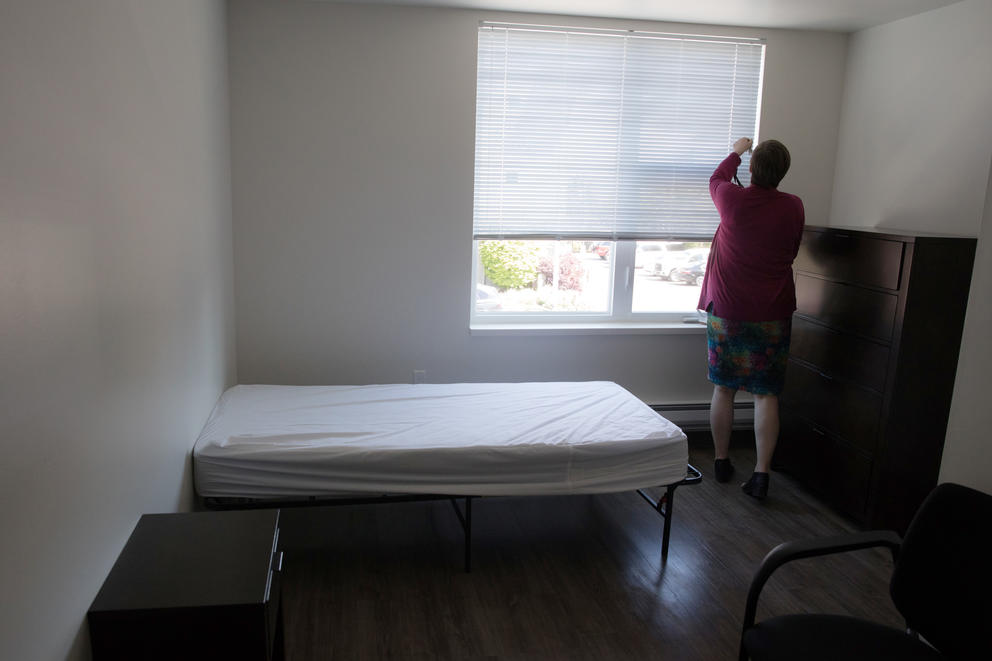“These are young people who made the courageous decision for their mental health or substance-use disorder, and their reward is to be discharged to emergency shelter, a drop in center that has no beds, or worse,” said Jim Theofelis, executive director of NorthStar Advocates, at a public hearing before the House Health Care and Wellness Committee on Jan. 16.
A 2023 report from the Washington Department of Social and Health Services found that within 12 months after exiting state inpatient behavioral health treatment in 2021, 13% of youth and young adults become homeless.
Those working to address Washington’s homelessness crisis believe these numbers send a clear message: Washington must create housing interventions for this group of people.
House Bill 1929 would allocate tax dollars to the Health Care Authority (HCA) to support existing nonprofit or tribal community organizations in establishing at least two residential programs on both sides of the state, offering 90 days of housing for young people aged 18-24 who have recently completed an inpatient behavioral health program and do not have long-term housing.
In working with existing organizations, proponents say the program will be culturally responsive to the communities they are serving.
In addition to providing stable housing, the program would offer peer support, medication management, and behavioral health services with the goal of ensuring successful re-integration into the community.
Vy, who asked that their last name not be published for privacy reasons, told legislators at the Jan. 16 hearing that an extra 90 days of support would’ve made a significant difference in their healing and re-integration into society
Prime sponsor Rep. Julio Cortes, D-Everett, said that when he was approached by Theofelis, who proposed the idea after dedicating decades of his life to addressing youth homelessness, he was intrigued given his own experiences working in teen and young-adult shelters.
“I did see firsthand how often we fail young people by not supporting through a full process with safe housing and supportive services,” Cortes said.
Cortes said that while programs providing housing and supportive services do exist, they often cut off eligibility when a person turns 18, which may explain in part why homelessness numbers are so high for young people aged 18-24.
“There are quite a bit of services for youth, but I think we’re recognizing … that young adults also need that support,” Cortes said. “That’s the gap we need to make sure we close.”
Proponents of the bill described the current landscape to lawmakers during public hearings, urging them to intervene in this cycle of homelessness.
Theofelis said that although emergency shelters, where many young people are currently sent after treatment, do serve a necessary function, they aren’t designed to support a person’s sobriety, medication management or mental health conditions.
Young people have told him how maintaining their sobriety, staying on top of their medication, and continuing to heal post-inpatient is difficult in this environment because temporary shelters usually lack adequate supportive services.
Proponents of the bill say that when young people are discharged into emergency shelters or back onto the streets, they risk the progress they made during inpatient treatment.
“I believe that one of the most dangerous times in a person’s recovery journey is the day they leave an inpatient program and return to the same environment they were in before,” addiction recovery advocate Sarah Spier said at the Jan. 16 hearing. “Young people … invest a great deal of hope and personal work, and all of that is risked when a young person is discharged without a support program.”
The program established by HB 1929 might even encourage young people to enter inpatient programs, since they know they would have somewhere stable to land after their treatment, explained Theofelis and others who testified.
Cortes said the bill has bipartisan support, with the main concern being that the program isn’t big enough, allocating funding for only six to 10 beds in at least two locations on each side of the state.
Cortes said that while six to 10 beds is just a drop in the bucket, he hopes it will be scaled up in the future.
“When you’re trying to do a system-level change, you want to make sure both sides of the state are covered and prove that it works, and then we hope to come back and start expanding,” Theofelis said.
Cortes said he has engaged in conversation with community and tribal organizations, who are excited about the opportunity to help reach more young people if the program is scaled up in the future.
In Washington and nationally, the number of people experiencing homelessness has reached record highs since the pandemic, largely driven by rising housing costs. According to federal data, homelessness in Washington increased nearly 20% between 2007 and 2023.
Cortes said that although this program may make only a small dent in the issue, it’s part of a wave of preventative measures needed to chip away at the issue of homelessness.
House Bill 1929 unanimously passed the Senate on Thursday and now awaits a signature from Gov. Inslee before becoming law.
“If we are serious about solving homelessness, inpatient treatment is just the beginning of the journey,” Theofelis said. “We need safe housing to get people back on track.”
CORRECTION: An earlier version of this story included incorrect data about how many youth leaving state residential behavioral health treatment become homeless after exiting that care. The correct figure is 13% became homeless within 12 months.




